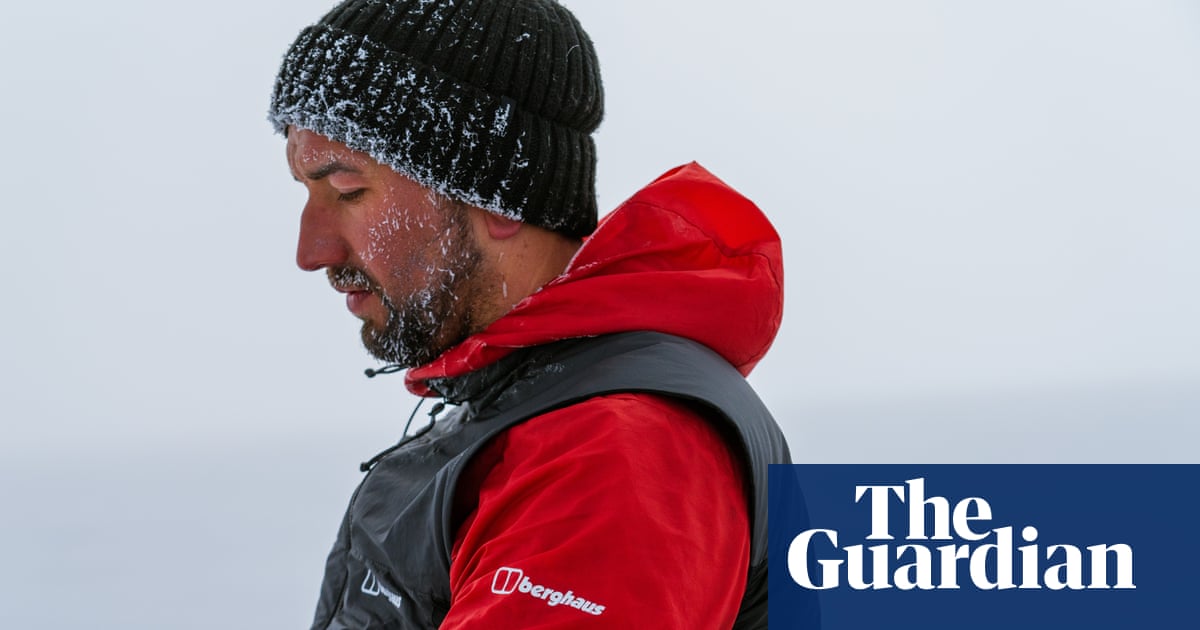The view from the top was breathtaking. It was 2023 and I had just climbed the Hvannadals Peak in Iceland, almost seven years after becoming paralysed from the chest down after a climbing fall. Raging winds had been replaced by crystal clear blue skies. My two teammates and I were on our way to becoming the first all-disabled team to cross Europe’s largest ice cap, the mighty Vatnajökull glacier, unsupported and unassisted.
A year before, when Niall McCann first suggested making the 100-mile trip, I was excited by the prospect of returning to this lost world of crevasses, mountains and ice, but apprehensive and anxious about whether I’d struggle. A small part of me thought about how much easier it would be if I could still walk. Back then, I often put a positive spin on my situation, but I still would have given anything for my legs to work and to be able to walk again.
But I was eager for adventure and signed on to do the trip with McCann, who had broken his back when the wing of his paraglider collapsed, and Ed Jackson, a former professional rugby player who had broken his neck in 2017.
From our start point at the western edge of the Vatnajökull, we faced a frozen, hostile landscape. We would need to battle through storm-force winds and work as a team to overcome the limits of our spinal cord injuries. This was going to be the toughest challenge of my life.
The plan was to ascend from the base of theice cap to its highest point, the Hvannadals Peak at 2,110 metres. I stared at the steady, snow-covered incline in front of us. We anticipated it would take four days to reach the summit. Roped together, we started toward the frozen horizon , dragging two sledges laden with gear behind us.
Just 10 minutes into our journey, I was already beginning to feel the strain on my shoulders and arms as I used my upper body to propel my sit-ski up the steady incline. The weight of our gear was a constant form of resistance as it dragged stubbornly through the snow behind us. And yet, with each drive of my poles into the snow, I pushed myself further from civilisation – and closer to the man I’d once been.
My mind drifted to the last time I was on a mountain before my accident, climbing Monte Rosa in the Italian Alps and feeling the addictive mixture of adrenaline, excitement and trepidation. Those same emotions returned as we battled for four days through powerful storms, hidden crevasses and white-out conditions before we reached the ice cap’s highest point.
I was at the top when I was hit by an unexpected wave of emotion. I realised that, despite all that I had been through – all the challenges and setbacks I had faced – if someone asked me if I wanted my legs back, I would have said no.
For the first time since my world had changed, I realised a profound and simple truth – that I wouldn’t go back to the day of my accident and change what happened. I would take the pain of knowing what was to come, in order to experience this moment of triumph. Tears began to roll down my cheeks as I looked at the world beneath me. Somehow, through the trials of the previous six years, I’d found my way back to “me”. They were tears of joy, relief and pride.
After 11 arduous days, and countless falls, slips and setbacks, our team of three approached the eastern edge of the Vatnajökull glacier. We had defied the odds, transcended our physical limitations and emerged victorious.
I realised that this journey was about embracing the power of resilience, finding strength in tough moments, and discovering that I was just as capable as I always had been – I just hadn’t realised it yet.
And so, with renewed determination and a new perspective, a spark of inspiration was born – I was going to sit-ski to the south pole. From that spark of inspiration came a concrete plan to make that dream a reality. In December, I will embark on that journey and will cover 207 miles in the process.
That moment at the summit of the Vatnajökull affected every aspect of my life and the way I perceived my disability. No longer did I consider myself disabled or injured, because, if I could reach the summit of a remote ice cap, I could overcome the frustrations and setbacks of day-to-day life with resilience and tenacity. Yes, I do still have a life-changing injury – but, for me, it’s been for the better.







